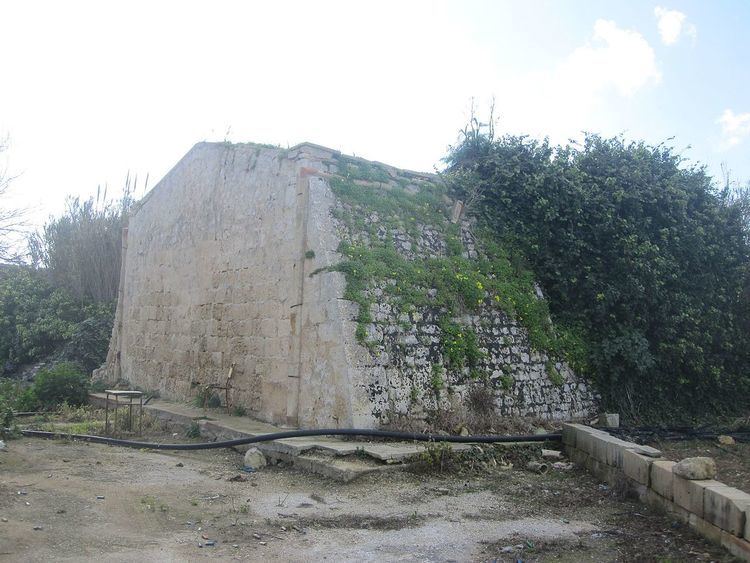Denomination Roman Catholic Functional status Church Dedication Michael | Country Malta Status Disused Completed 15th century | |
 | ||
Similar Manoel Theatre, Fort Rinella, Megalithic Temples of Malta, National Museum of Archaeol, Fawwara Gate | ||
The Chapel of St Michael more popularly known in Maltese as Il-Kappella tas-San Ċir or Il-Kappella ta' San Mikiel is Sanċir is a medieval chapel located in the limits of Rabat, Malta in an area referred to as Ġnien is-Sultan (King's Garden).
Contents
Origins
The chapel's architecture dates back to the middle of the 15th century. The first mention of the chapel is found in a report written by Bishop Pietro Dusino when he visited Malta in 1575. The report refers to the church as the church of St Michael in the garden of Ġnien is-Sultan. The chapel was mentioned numerous times through the years, notably in 1615 when Bishop Baldassare Cagliares described the painting of St Michael located in the church as barley recognizable, indicating the poor state of the chapel. In 1598 Bishop Gargallo mentions that the feats of St Michael was celebrated every September 29 with vespers with the attendance of the local farmers. However, due to its neglected state, in 1678 Bishop Miguel Jerónimo de Molina deconsecrated the church and ordered that the painting of St Michael be transferred to the parish church of Rabat.
Use as a stable
Unfortunately the chapel fell in disrepair and was used as a stable and storage space by local farmers. Moreover, a wall was also built inside the chapel to divide it in two sections.
Restoration
In 1981 the chapel was restored and the wall that divided the chapel was demolished. The chapel was restored by a group of volunteers known as the Sanċir Trust and other volunteers from the National Students Travel Foundation and the Friends of Malta. A stone altar was built and the church was finally reopened once more for religions services on October 2, 1988. The President of Malta of the time, Ugo Mifsud Bonnici attended the opening service. The service was led by Monsignor Gwann Azzopardi who was a great benefactor of the chapel's restoration.
Present day
Unfortunately, after almost 30 years since the church was restored, it once more, fell into disuse and disrepair and is in danger of collapsing. Vegetation has grown on the walls of the chapel and over grown trees have blocked the main entrance of the chapel. Moreover, a small part of the roof near the altar collapsed while cracks in the chapel's walls can be seen.
Interior
The interior of the chapel is quite bare. The interior is one spacious room with the walls built in the form of a number of pointed arches, typical to medieval architecture in Malta. There is one stone altar. During the restoration of the 1980s some stone benches were discovered by the wall of the chapel. The chapel can be accessed by 2 doors. A Graffiti of a ship was discovered on the walls of the chapel, probably some kind of Ex-voto.
Name of the chapel
Most probably, the chapel's origins go back to Byzantine times. The only evidence of this is due to the name of the chapel Is-Sanċir. According to Professor Stanley Fiorini the name is-Sanċir might indicate that originally the chapel was dedicated to Cyriacus the Anchorite, a Greek saint. After the Moors were driven out of Malta, Christianity regained its power over Malta, however this time it was western Latin Christianity which was spreading, replacing any traces of the Greek Christianity in Malta dating from Byzantine times. As a result of this the names of most churches in Malta dedicated to Greek saints were replaced by the names of popular western saints. Thus the name of this chapel might have been changed from that of St Cyriacus (San Ċirijaku or San Ċir in Maltese) to St Michael (San Mikiel). Moreover, it might be possible that local people still referred to the chapel with its original name, hence the name San Mikiel Is-Sanċir or literal translation in English St Michael the St Cyr. However no documentation survives to proof this theory.
